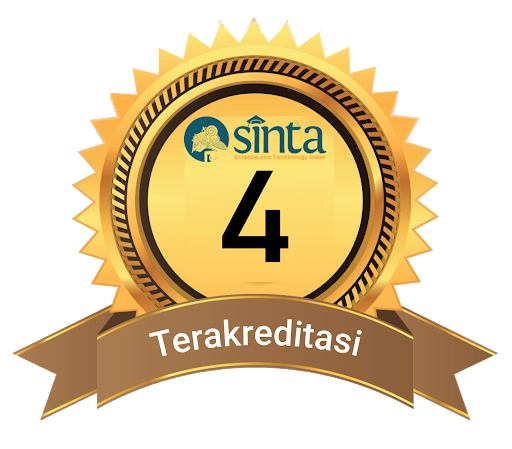Al-Ghozali and Hasan Al Bashri’s Concept of Happiness to Improve Psychological Well Being
Abstract
Humans have a goal to achieve happiness. But not all humans are able to achieve true happiness. Human behavior that can lead to true happiness by strengthening faith, piety, good deeds, etc. Al Ghazali gave the concept of how to achieve happiness by getting closer to God. In addition, the thoughts of the character Hasan Al Bashri also explain how to get happiness through zuhud, khauf and raja’. The purpose of this study was to compare how Al-Ghazali and Hasan Bashri’s concept of happiness improves psychological well-being. The research method uses literature, namely research conducted by collecting data or scientific works that are literary in nature. The results of the study show that happiness in al-Ghazali’s concept is divided into three: recognizing oneself, placing the heart as a leader, recognizing Allah so that one is able to reach the ma’rifat of Allah. Meanwhile, al Bahsri explains happiness through Sufism by way of zuhud’ raja and khauf. Cooperation to improve well being with self-acceptance, positive relationships with others, environmental mastery and life goals.
Full Text:
PDFReferences
Afifah, N., & Nasution, F. (2023). Peran Guru Bimbingan dan Konseling (BK) dalam Mengembangkan Kepercayaan Diri dan Kesejahteraan (Well Being) Siswa. Munaddhomah: Jurnal Manajemen Pendidikan Islam, 4(2), 368–380. https://doi.org/10.31538/munaddhomah.v4i2.458
Agarwal, S., Linh, N. T. D., & Aponte, G. J. R. (2022). Student Perception Regarding Chatbot for Counselling in Higher Education. Dalam V. E. Balas, V. K. Solanki, & R. Kumar (Ed.), Recent Advances in Internet of Things and Machine Learning (Vol. 215, hlm. 263–281). Springer International Publishing. https://doi.org/10.1007/978-3-030-90119-6_22
Aldjanabi, W., Dahou, A., Al-qaness, M. A. A., Elaziz, M. A., Helmi, A. M., & Damaševičius, R. (2021). Arabic Offensive and Hate Speech Detection Using a Cross-Corpora Multi-Task Learning Model. Informatics, 8(4), 69. https://doi.org/10.3390/informatics8040069
Alharbi, A., Kalkatawi, M., & Taileb, M. (2021). Arabic Sentiment Analysis Using Deep Learning and Ensemble Methods. Arabian Journal for Science and Engineering, 46(9), 8913–8923. https://doi.org/10.1007/s13369-021-05475-0
Amelia, A., Amri, Y., & Ali, J. (2022). How to Apply of Design Application as A Medium for Learning Arabic. Journal International of Lingua and Technology, 1(1), 15–26. https://doi.org/10.55849/jiltech.v1i1.58
Aspegren, K. (1999). BEME Guide No. 2: Teaching and learning communication skills in medicine-a review with quality grading of articles. Medical Teacher, 21(6), 563–570. https://doi.org/10.1080/01421599978979
Balaha, H. M., Ali, H. A., Saraya, M., & Badawy, M. (2021). A new Arabic handwritten character recognition deep learning system (AHCR-DLS). Neural Computing and Applications, 33(11), 6325–6367. https://doi.org/10.1007/s00521-020-05397-2
Boranbayev, A., Baidyussenov, R., & Mazhitov, M. (2021). Development and Design of a Library Information System Intended for Automation of Processes in Higher Education Institution. Dalam K. Arai (Ed.), Intelligent Computing (Vol. 285, hlm. 437–445). Springer International Publishing. https://doi.org/10.1007/978-3-030-80129-8_31
Bordeleau, M., Léonard, G., Gauthier, L., Ferland, C. E., Backonja, M., Vollert, J., Marchand, S., Jackson, P., Cantin, L., & Prud’Homme, M. (2021). Classification of Qualitative Fieldnotes Collected During Quantitative Sensory Testing: A Step Towards the Development of a New Mixed Methods Approach in Pain Research. Journal of Pain Research, Volume 14, 2501–2511. https://doi.org/10.2147/JPR.S301655
Brew, A., & Boud, D. (1995). Teaching and research: Establishing the vital link with learning. Higher Education, 29(3), 261–273. https://doi.org/10.1007/BF01384493
Ekawati, S., Subarudi, Budiningsih, K., Sari, G. K., & Muttaqin, M. Z. (2019). Policies affecting the implementation of REDD+ in Indonesia (cases in Papua, Riau and Central Kalimantan). Forest Policy and Economics, 108, 101939. https://doi.org/10.1016/j.forpol.2019.05.025
Fitria, Y., Budi, Y. S., Damayanti, F. E., & María-José, C. (2023). Psychological Well-Being of Al-Qur’an Education School Teachers in Banyuwangi. World Psychology, 2(2), 105–113. https://doi.org/10.55849/wp.v2i2.117
Hamilton, A. B., & Finley, E. P. (2019). Qualitative methods in implementation research: An introduction. Psychiatry Research, 280, 112516. https://doi.org/10.1016/j.psychres.2019.112516
Hartini, S., Alie, E., & March, J. (2022). The Relationship Between Authoritarian Parenting and Aggressive Behavior of Adolescents in Nagari Bungo Tanjung. World Psychology, 1(2), 18–26. https://doi.org/10.55849/wp.v1i2.98
Hidayat, R., & Nurliah, N. (2023). Semiotic Analysis of the Meaning of Social Support in the Lyrics of the Song Pelukku Untuk Pelikmu by Fiersa Besari. Journal International of Lingua and Technology, 2(2), 102–124. https://doi.org/10.55849/jiltech.v2i2.459
Imtinan, G., Rahayu Z, S. P., Anindya, S., & Malin, A. (2023). The Impact of Infidelity on Children’s Psychological Development. World Psychology, 2(2), 114–130. https://doi.org/10.55849/wp.v2i2.156
Nada, A., & Ajwan, A. (2023). A Corpus-based Analysis of Modal Auxiliaries of William Golding’s Novel “The Lord of Flies.” Journal International of Lingua and Technology, 2(2), 90–101. https://doi.org/10.55849/jiltech.v2i2.461
Nawawi, K. (2018). Harta Bersama Menurut Hukum Islam dan Perundang-undangan di Indonesia. Mizan: Journal of Islamic Law, 1(1). https://doi.org/10.32507/mizan.v1i1.104
Niswatin, N., Damayanti, E. S., Jonathan, B., & Joshua, W. (2023). School Excellence and Acceleration Policy: A Review of Theory and Implementation. Lingeduca: Journal of Language and Education Studies, 2(2), 158–173. https://doi.org/10.55849/lingeduca.v2i2.300
Setiawan, A. E., Aras, I., Andika, T. H., & Hendrawan Putri, A. I. (2023). Human Anatomi Recognition Using Augmented Reality With Marker Based Method Tracking. Jurnal Sisfokom (Sistem Informasi dan Komputer), 12(1), 83–89. https://doi.org/10.32736/sisfokom.v12i1.1638
Sweileh, W. M. (2018a). A bibliometric analysis of global research output on health and human rights (1900–2017). Global Health Research and Policy, 3(1), 30. https://doi.org/10.1186/s41256-018-0085-8
Sweileh, W. M. (2018b). Research trends on human trafficking: A bibliometric analysis using Scopus database. Globalization and Health, 14(1), 106. https://doi.org/10.1186/s12992-018-0427-9
Wamsler, C., Wickenberg, B., Hanson, H., Alkan Olsson, J., Stålhammar, S., Björn, H., Falck, H., Gerell, D., Oskarsson, T., Simonsson, E., Torffvit, F., & Zelmerlow, F. (2020). Environmental and climate policy integration: Targeted strategies for overcoming barriers to nature-based solutions and climate change adaptation. Journal of Cleaner Production, 247, 119154. https://doi.org/10.1016/j.jclepro.2019.119154
Wan, S., Qi, L., Xu, X., Tong, C., & Gu, Z. (2020). Deep Learning Models for Real-time Human Activity Recognition with Smartphones. Mobile Networks and Applications, 25(2), 743–755. https://doi.org/10.1007/s11036-019-01445-x
Yassine, A., Singh, S., & Alamri, A. (2017). Mining Human Activity Patterns From Smart Home Big Data for Health Care Applications. IEEE Access, 5, 13131–13141. https://doi.org/10.1109/ACCESS.2017.2719921
DOI: http://dx.doi.org/10.31958/jeh.v8i2.8528
Refbacks
- There are currently no refbacks.
Copyright (c) 2023 indah noor mazaya

This work is licensed under a Creative Commons Attribution-NonCommercial 4.0 International License.
El-Hekam Indexed By:














